Find of the Month: Aren’t You Dying To Know? – The Singer Family
Find of the Month: January
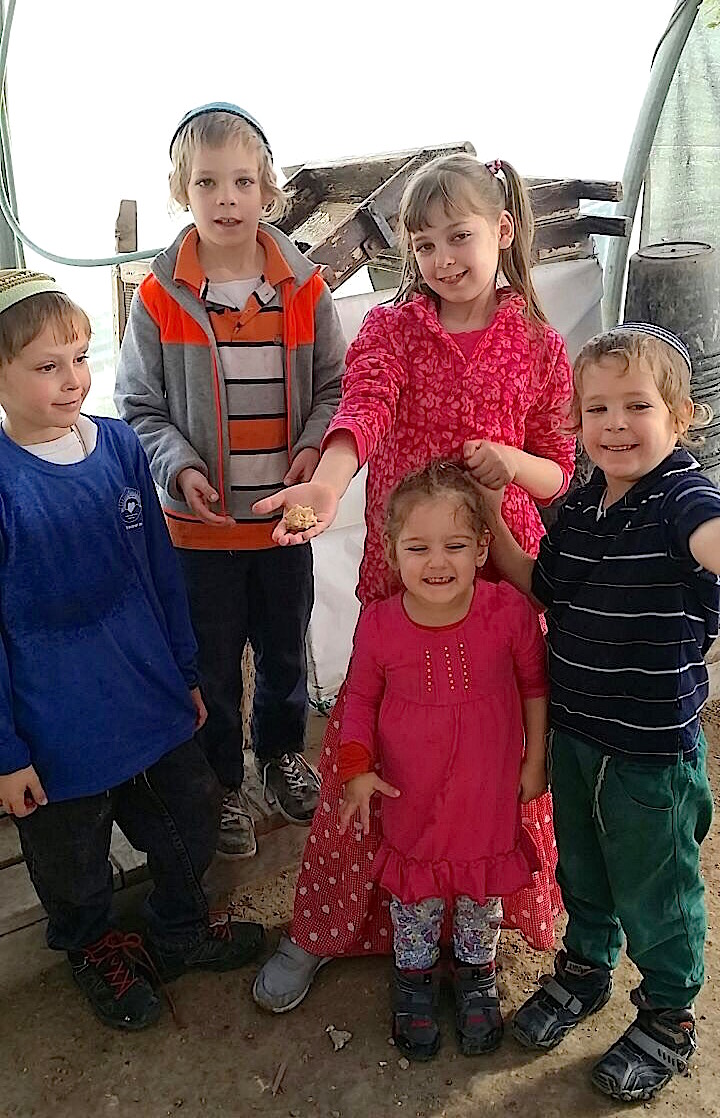
Singer Family and the Murex Shell
Aren’t you dying to know what this month’s “Find of the Month” is? Well, if you can’t tell from my bad pun, this month’s find of the month is a murex trunculus: a rock snail shell. It was found by the Singer family from Jerusalem, who were really excited to have found something so special. This shell is another piece to a puzzle we have been trying to put together here for years.
The murex family of snails are medium to large predatory, tropical, sea snails, also known as murexes or rock snails. They have elongated shells with spines of fronds and brightly colored inner surfaces. Aristotle used the word murex, and Vitruvius described the dye made from these shells, making this one of the oldest shell families still known today.
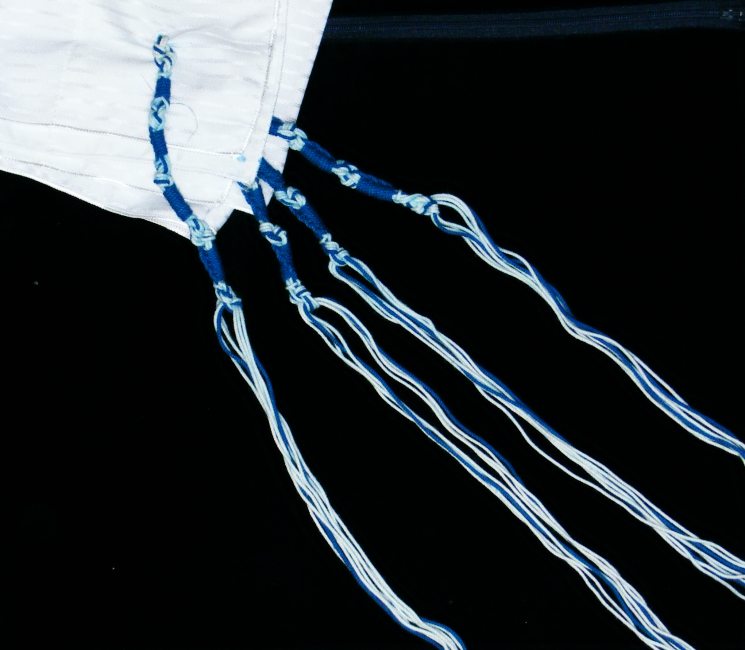
Modern tzit tzit with blue strings mimicking tehelet
What makes the murex trunculus so special is that they are connected with the ancient process of making tehelet, the blue dye we know from the Bible that was used in priestly garments and the Israelites’ tzit tzit (fringes). This snail family was also used to make the purple dye known in the Bible as argaman.
Making tehelet or argaman requires special skills as well as a lot of snails. Dye can be collected by crushing the snails, or by laboriousy poking (milking) the snails and collecting the excretion. 12,000 snails might yield 1.4 g of dye, which is only enough to color the trim of a single garment.[1] Because of this, this Royal Blue or Royal Purple dye was very expensive, making it an almost exclusive sign of kingship and royalty. Interestingly, the color of this dye becomes more vibrant when left in the sun, and it is possible that different versions of the color can be made by making the dye in the sun or in the shade.
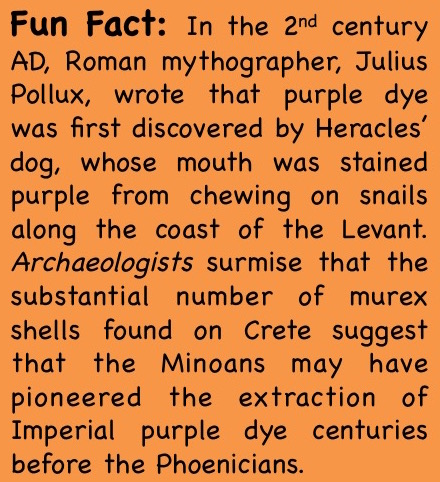 Much of the production of this type of dye we attribute to the Phoenicians. The purple is also known as Tyrian purple (from the Phoenician city of Tyre). Archaeologists have uncovered evidence of dye production at Phoenician sites in Morocco and all across the Mediterranean, including Israel. There is a lot of evidence at Tel Dor for Phoenician dye production in the Iron Age as well as the merchandizing and trading of goods like colored fabrics and wool.
Much of the production of this type of dye we attribute to the Phoenicians. The purple is also known as Tyrian purple (from the Phoenician city of Tyre). Archaeologists have uncovered evidence of dye production at Phoenician sites in Morocco and all across the Mediterranean, including Israel. There is a lot of evidence at Tel Dor for Phoenician dye production in the Iron Age as well as the merchandizing and trading of goods like colored fabrics and wool.
So what was this murex shell doing on the Temple Mount? Any time we find a shell, we know that it was used by humans because Jerusalem is too far from the sea for sea creatures (and their shells) to dwell there. This means that shells were brought to Jerusalem for a purpose. We have discovered over 20 of these murex trunculus shells in the sifting, and it leads us to wonder why. Is it possible that there was a workshop for dye production on the Temple Mount? Perhaps these shells were used to create the dye for fabrics used in the Temple. Maybe it was produced on site for purity reasons.
Unfortunately, we can’t date these shells until we have evidence that would link them to another, datable, artifact such as something else used in cloth or dye production. With more funding, we might be able to carbon date them, but each test costs about $400 and in order to reach statistical significance, we would need to test samples from 20 shells. Regardless, there is a lot of research yet to be completed on this, but these shells certainly raise a lot of really interesting questions.
Just because, check out this video see archaeologists extracting dye from one of these shells.
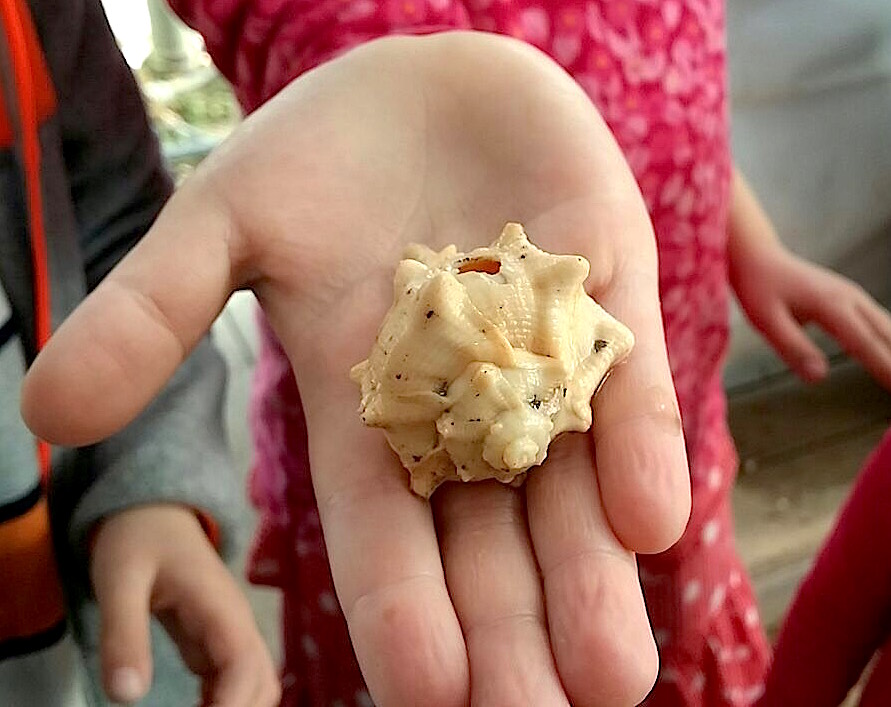
[1] Jacoby, “Silk Economics and Cross-Cultural Artistic Interaction: Byzantium, the Muslim World, and the Christian West” Dumbarton Oaks Papers 58 (2004:197–240) p. 210.

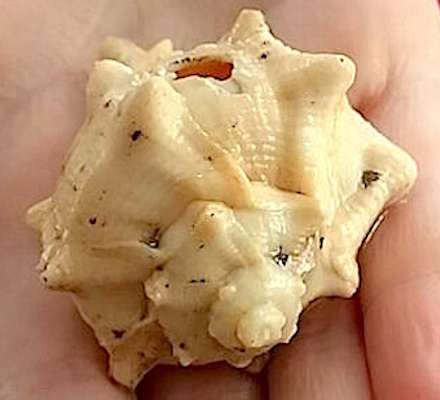












Reblogged this on Kattukse Vrienden voor Israël.
This is not a murex trunculus, this is murex brandaris. It was also used to dye cloth in purple and blue colour.
Thanks Olga for the correction. This specific item hasn’t been studied yet by our mulusc expert so the identification was based on our general knowledge of this type of seashells.
the minoans and cretians where part of the phoenician colonies… please educate yourself before spreading “fun facts”
Thank you for this apt demonstration of the need for proper education before spewing “facts” on the internet. It is true that the attribution of the advent of the Murex-dye industry to the minoans is contested among archaeologists. What isn’t contested is that the Minoans pre-date the earliest Phoenician colonies by several centuries.